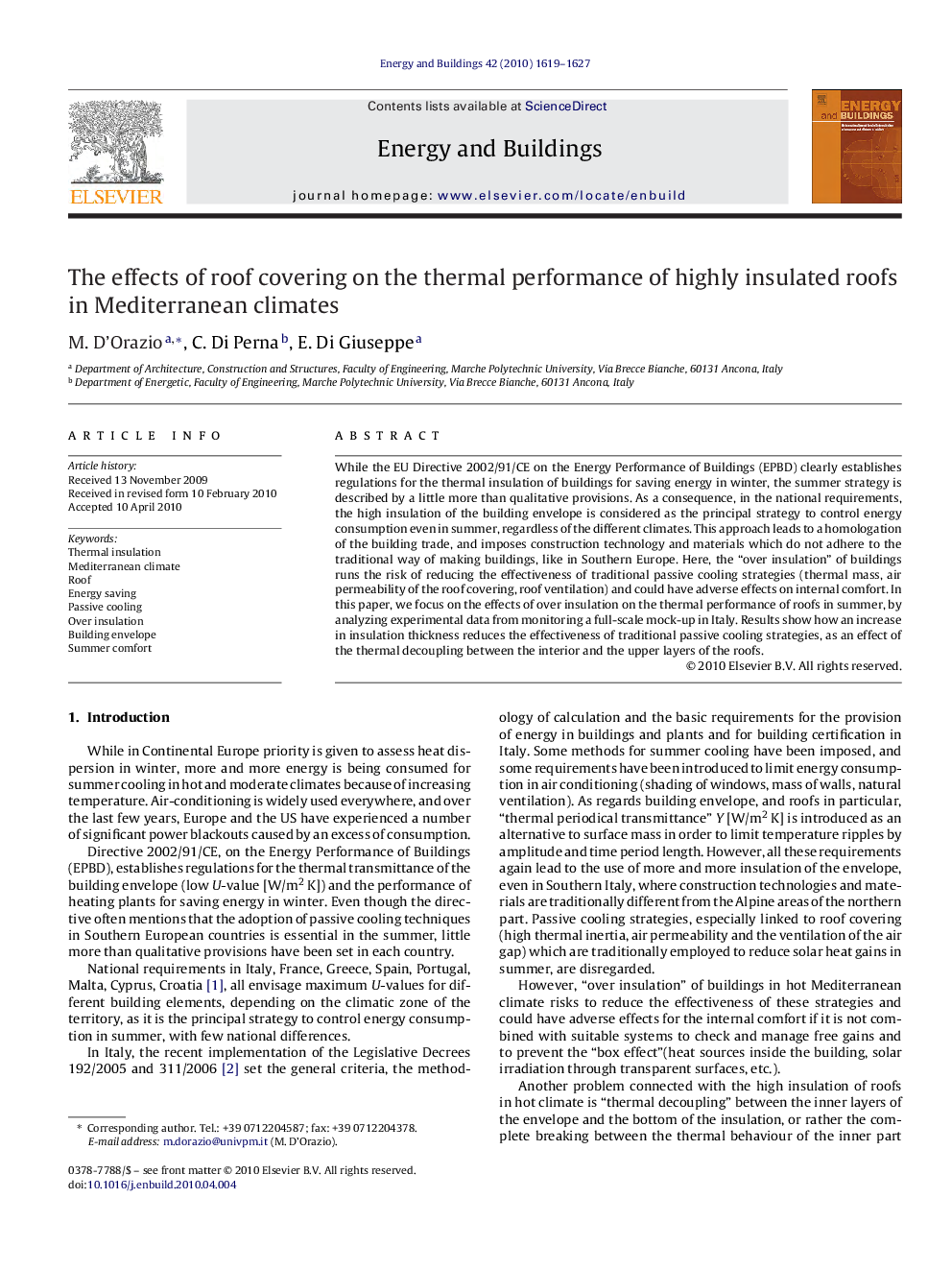| Article ID | Journal | Published Year | Pages | File Type |
|---|---|---|---|---|
| 264584 | Energy and Buildings | 2010 | 9 Pages |
While the EU Directive 2002/91/CE on the Energy Performance of Buildings (EPBD) clearly establishes regulations for the thermal insulation of buildings for saving energy in winter, the summer strategy is described by a little more than qualitative provisions. As a consequence, in the national requirements, the high insulation of the building envelope is considered as the principal strategy to control energy consumption even in summer, regardless of the different climates. This approach leads to a homologation of the building trade, and imposes construction technology and materials which do not adhere to the traditional way of making buildings, like in Southern Europe. Here, the “over insulation” of buildings runs the risk of reducing the effectiveness of traditional passive cooling strategies (thermal mass, air permeability of the roof covering, roof ventilation) and could have adverse effects on internal comfort. In this paper, we focus on the effects of over insulation on the thermal performance of roofs in summer, by analyzing experimental data from monitoring a full-scale mock-up in Italy. Results show how an increase in insulation thickness reduces the effectiveness of traditional passive cooling strategies, as an effect of the thermal decoupling between the interior and the upper layers of the roofs.
